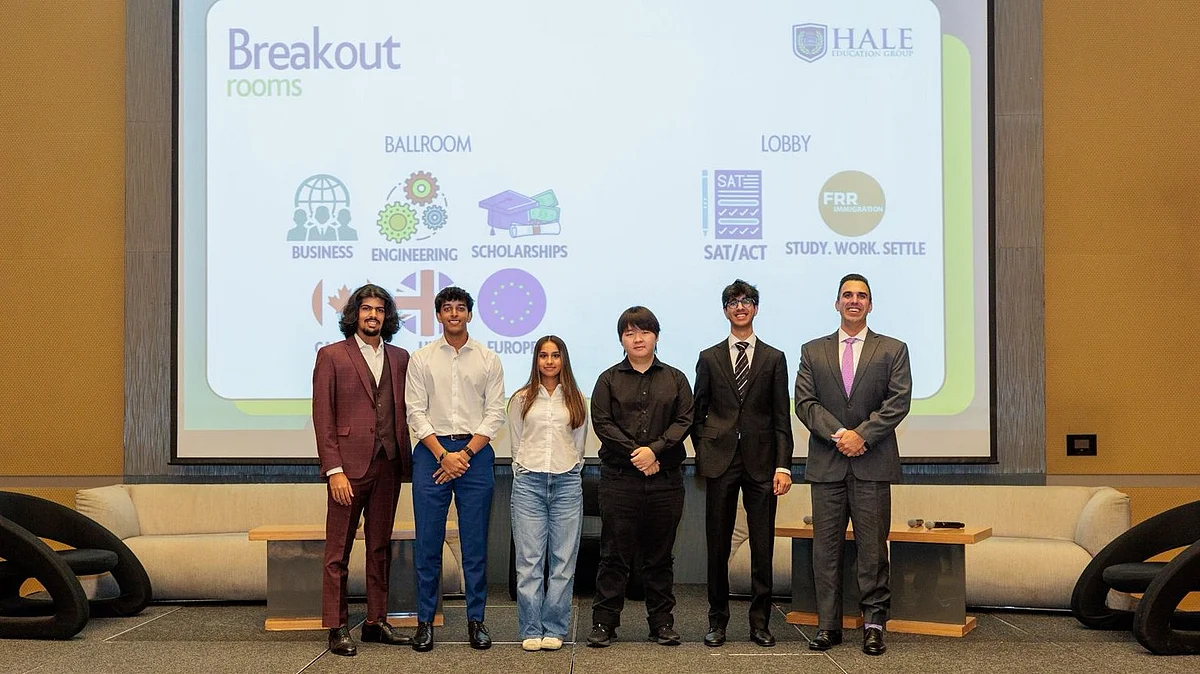
Five Key Trends For The 2025-2026 US College Admissions Cycle
The 2025-2026 college admissions cycle has been marked by significant shifts, including the reinstatement of standardized testing requirements at top universities, evolving early application trends, and new enrollment strategies such as alternate campuses and waitlist management. Below, we explore the key developments shaping this year's admissions landscape.
1. The continued return of standardized testing requirements
Recommended For You Interfaith marriage, no-fault divorce: Why Abu Dhabi family court is popular globallyCiting concerns about predictive validity, equity, and the effects of high-stakes testing, many colleges stopped requiring SAT or ACT scores beginning around ten years ago. At the peak of this trend in 2022, test-optional policies were implemented by almost 80% of undergraduate institutions; this trend was accelerated by COVID-19 disruptions, which made it impossible for students to access standardized tests. However, new data regarding the SAT's lack of discrimination and predictive power (students who were accepted test-optional at UT Austin scored a full letter grade lower than SAT-submitting peers) a number of prestigious schools started to change their ways in 2024–2025.
Among Ivy League institutions, Harvard, Yale, Brown, and Dartmouth will require standardized tests again starting in Fall 2025. Cornell will reinstate testing for Fall 2026, though some of its colleges will remain test-recommended or score-free. Yale has adopted a test-flexible policy, allowing students to submit SAT, ACT, AP, or IB scores. Meanwhile, Columbia, Princeton, and the University of Pennsylvania remain test-optional.
Outside the Ivy League, MIT, Georgetown, Purdue (starting Fall 2024), Caltech, and the University of Texas at Austin (Fall 2025) have reinstated testing requirements. Stanford, Vanderbilt, and the University of Wisconsin plan to require tests in the 2026-2028 cycles.
2. Early application trends: (Remaining) test-optional schools see surges
Early Decision (ED) and Early Action (EA) data reveal notable shifts in applicant behavior. The University of Pennsylvania saw a 12% increase in ED applications, surpassing 9,500 submissions, likely due to expanded financial aid (including full tuition for families earning under $200,000) and its test-optional policy. Notre Dame experienced a 16% surge in Restrictive Early Action (REA) applications, totaling 12,917, driven by a new no-loan financial aid policy. Duke, which remains test-optional, received 6,627 ED applications-a 6% increase-bolstered by full tuition grants for North and South Carolina residents. The University of Texas at Austin saw a 24% rise in applications, partly attributed to its recent adoption of the Common App.
Conversely, schools that reinstated testing requirements saw declines in early applications. Brown experienced an unprecedented 19% drop, Yale saw a 14% decrease, and MIT had a 4% reduction. Columbia faced a slight 2% dip, possibly due to campus unrest affecting applicant interest. Broader trends show that 904,860 students submitted over 4 million applications via the Common App by November 1. Public universities (+12% growth) outpaced private ones (+8%), and more students submitted test scores than in 2021, even at test-optional schools.
3. New admissions strategies: Alternate campuses and waitlist overuse
Waitlists have grown increasingly contentious, with universities stringing along many more students than they could even conceivably admit. Who's the worst offender? The University of Michigan waitlisted 24,804 students (enough to fill its freshman class three times over) yet only admitted 973 (3.9%). Similarly, the University of Virginia waitlisted 10,470 students but admitted just 242 (2.3%). Harvard, which refuses to disclose waitlist numbers, has faced criticism for lacking transparency, as many believe their waitlist is similarly skewed towards the impossible.
Meanwhile, universities are increasingly admitting students to alternate campuses or delayed start dates to manage housing shortages and boost revenue. Northeastern University directs some students to its Oakland or London campuses, Purdue has expanded to an Indianapolis campus, and Clemson and Penn State admit certain students for summer starts. All of these come as solutions to both housing shortages on main campuses, as well as an attempt to hide sub-par applicants, as satellite campus acceptees are not required to be reported under the main campus's first-year statistics.
4. Affirmative action fallout and demographic shifts
Following the Supreme Court's 2023 ban on race-conscious admissions, colleges have sought new ways to maintain diversity. Early application cycles show a 19% increase in first-generation applicants and a 16% rise in underrepresented minority applicants. However, some evidence suggests elite colleges may be admitting more White and Asian students to avoid legal scrutiny-a trend that would favor many Dubai-based international students. A key question remains: Are schools deliberately“course-correcting” to evade investigations, or are these shifts part of natural fluctuations in applicant demographics?
5. New early decision programmes
The University of Michigan will launch an Early Decision option for Fall 2026, allowing applicants to receive decisions in December-joining private schools with binding ED policies. Meanwhile, USC's Marshall School of Business is piloting an Early Decision program for Fall 2025, requiring admitted business and accounting majors to commit to USC and withdraw other applications.
What it all means for students
● Focus heavily on SAT prep – Many top schools are reinstating SAT/ACT requirements.
● Beware of waitlists and alternate offers – Thousands are waitlisted with minimal chances, while others are steered to satellite campuses.
● Make use of new ED options – Students interested in UMich and USC Marshall finally have a chance to dramatically improve their admissions odds.
As the admissions process grows ever-more competitive, strategic planning and adaptability are essential. At Hale, we're committed to guiding students through these challenges-equipping them with the insights and support they need to succeed in this dynamic admissions landscape.
The writer is education consultant at Hale Education Group.

Legal Disclaimer:
MENAFN provides the
information “as is” without warranty of any kind. We do not accept
any responsibility or liability for the accuracy, content, images,
videos, licenses, completeness, legality, or reliability of the information
contained in this article. If you have any complaints or copyright
issues related to this article, kindly contact the provider above.

















Comments
No comment